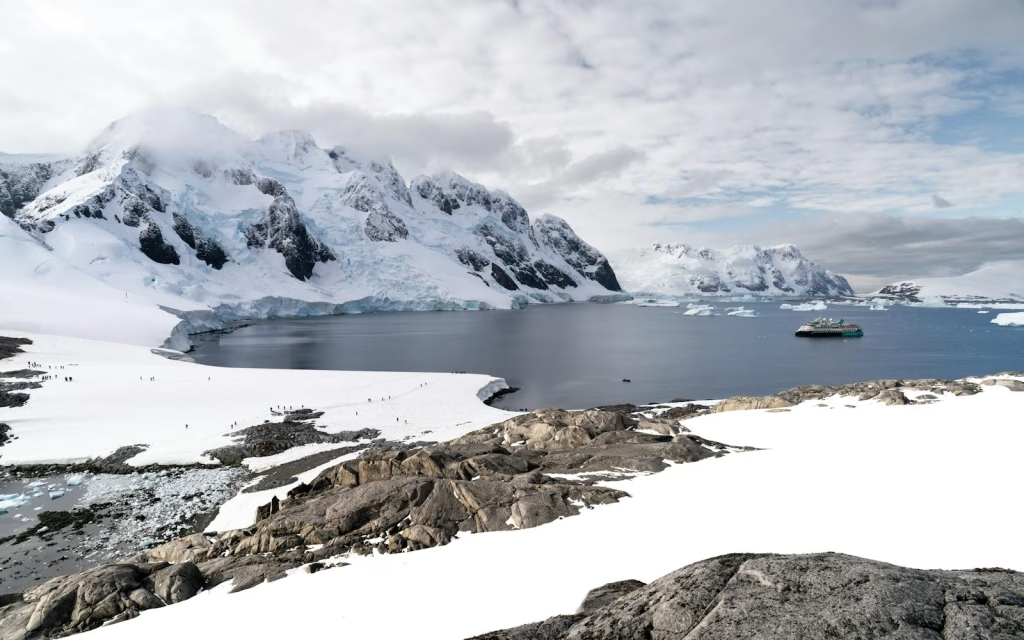Let me tell you about one of the wildest, most remote places on Earth that has captured my imagination since I was a kid: Antarctica. I mean, who wouldn’t be intrigued by the idea of exploring the last untouched continent? It’s like something straight out of a sci-fi movie, right? But this place is very real, and it’s as extreme as it gets.
Why Antarctica?
So, why would anyone want to visit a place where the average temperature in the summer hovers around -20°C (-4°F), and in winter, it drops even lower? Well, let me take you back to the moment when I first thought, “I’ve got to go there.” I was watching a documentary about Emperor penguins—those resilient little guys who trek miles across the ice just to survive. They looked so majestic, so determined, and I thought, if they can thrive in such harsh conditions, there’s got to be something incredibly special about this place.
And there is. Antarctica is a land of superlatives. It’s the coldest, driest, and windiest continent on Earth. But it’s also a place of jaw-dropping beauty—endless white landscapes, towering icebergs, and the clearest blue waters you’ve ever seen. The sheer isolation of it is both terrifying and thrilling. It’s no wonder explorers like Ernest Shackleton and Robert Falcon Scott risked everything to reach its heart.
Getting There: An Adventure in Itself
Let’s talk about the journey. Getting to Antarctica isn’t exactly a walk in the park. For most people, the adventure begins in Ushuaia, Argentina—the southernmost city in the world. From there, it’s a two-day voyage across the Drake Passage, one of the roughest seas on the planet. When I first read about the Drake, I felt a mix of excitement and dread. Stories about waves that can reach up to 40 feet high had me rethinking my life choices!
But here’s the thing: everyone who’s made the journey says it’s totally worth it. It’s not just about the destination; it’s about the journey, right? Plus, once you’ve survived the Drake Passage, you feel like you’ve earned your first taste of Antarctica. And let me tell you, that first glimpse of the continent from the deck of a ship—those icy mountains rising out of the sea—is something you’ll never forget.
What to Expect on the Ice
Now, let’s dive into what it’s like when you finally set foot on the Antarctic Peninsula. Picture this: stepping onto the ice for the first time, surrounded by thousands of penguins. The silence is almost eerie, broken only by the squawking of the penguins and the crack of icebergs in the distance. You’re standing on the edge of the world, and it feels like time has stopped.
One of the coolest things about visiting Antarctica is the wildlife. Penguins are obviously the stars of the show—especially the playful Gentoo penguins that waddle around like they own the place. I once read about a traveler who spent hours just watching a penguin colony. They’re such funny, curious creatures that you could easily lose track of time just observing them go about their day.
And let’s not forget the seals! There’s something magical about seeing a Weddell seal basking on the ice or watching a leopard seal hunting beneath the surface. And if you’re lucky, you might even spot a whale or two. Humpback whales are frequent visitors, and seeing one breach the water right in front of you is nothing short of awe-inspiring.
The Science of Antarctica
But Antarctica isn’t just about stunning landscapes and incredible wildlife. It’s also a hub for scientific research. About 70 research stations operate year-round, run by countries all over the world. Scientists study everything from climate change to glaciology, and even the stars—because the lack of light pollution makes Antarctica one of the best places for astronomical observations.
In fact, did you know that ice cores drilled in Antarctica have provided us with crucial information about Earth’s climate history? By analyzing these cores, scientists can look back over 800,000 years and see how our planet’s climate has changed over millennia . It’s mind-blowing stuff!
Personal Reflections
I’ll be honest with you: traveling to Antarctica isn’t easy, and it’s not cheap. It’s one of those “once-in-a-lifetime” trips that you have to really plan for. But if you ask me, it’s worth every penny and every minute of preparation. There’s something profoundly humbling about standing in a place so untouched by human hands, where nature reigns supreme.
I remember talking to a friend who had the chance to visit Antarctica last year. He told me that the experience changed him in ways he didn’t expect. “It made me feel small,” he said, “but in a good way. Like I was part of something much bigger.” And I think that’s what Antarctica does—it puts things in perspective.
Final Thoughts
So, if you’re the kind of person who dreams of adventure, who loves the idea of pushing your boundaries, then Antarctica is calling your name. It’s not just another travel destination; it’s the final frontier—a place where you can experience the world in its most raw and untamed form.
I hope this post has inspired you to think about visiting Antarctica. It’s a challenging journey, but the rewards are beyond anything you can imagine. And hey, if you ever decide to make the trip, I’d love to hear about your experience! Until then, keep exploring and keep dreaming big.
Thanks for reading, and happy travels.

